
Mainstreaming bison meat
By Mark Cardwell
Food Trends Meat &Poultry Editor pick Northfork Bison Quebec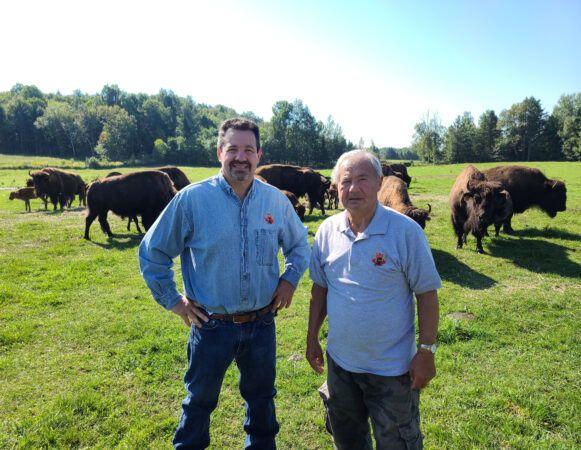 Rocco Verelli and his father Luigi at a Bison farm. All photos courtesy Northfork Bison
Rocco Verelli and his father Luigi at a Bison farm. All photos courtesy Northfork Bison Montreal food entrepreneur Rocco Verelli has always been big on bison.
From the moment he first saw one as a kid, he was struck by the majestic presence of the ox-like mammals, which are native to North America and once roamed the Great Plains by the tens of millions, the largest concentration of large animals in recorded history.
Later, as a young restaurateur, he and his father Luigi raised the mostly gentle giants on their family’s hobby farm just south of Montreal.
“Bison add a special magic to the landscape,” said Verelli. “Seeing them roam and graze in a field is like a throwback in time.”
As the founder and president of Northfork Bison, one of Canada’s biggest specialty and wild game meat companies, which is celebrating its 25th anniversary this year, Verelli is now leading the charge to both educate consumers on the savoury goodness of protein-packed bison meat and stimulate growth in a niche food industry that has helped bring the beefy ruminants back from the brink of extinction.
Based in a newly retooled, federally approved plant in Montreal’s Italian-centric Saint-Leonard neighbourhood, his company processes some 3,000 bison from more than a dozen producers in Western Canada each year, producing mostly bison steaks and burgers for restaurants, supermarkets, and foodservice distributors across North America.
From a handful of workers and customers when operations started in 1997, Northfork Bison now employs more than 40 people in Canada and the United States. Thanks to its fleet of eight refrigerated trucks and an inventory warehouse in New Jersey, it can fill orders—both pick-up and delivery—anywhere in Canada and the U.S. within 24 hours.
“We’re one of the biggest players in the space in Canada,” said Verelli. “What differentiates us is that we control everything from A to Z. We have contracts with farmers who deliver the animals to slaughterhouses, we do our own processing, and our trucks go all the way to Washington, D.C.”
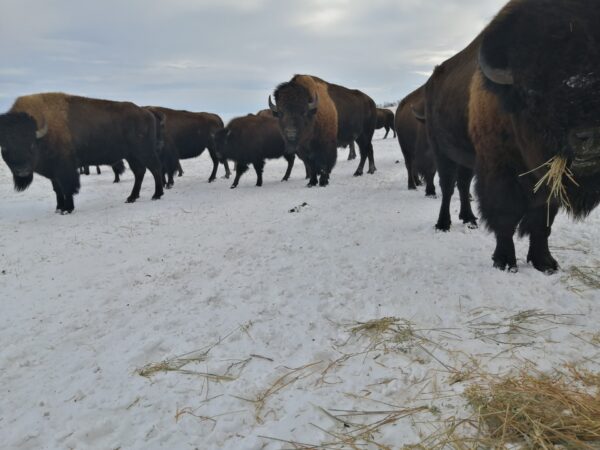
Verelli started raising bison as a hobby on his dad’s small farm in the town of Saint-Rémi, Que.
According to Verelli, roughly half of Northfork Bison’s processing production is sold as fresh meat under its brand name products in supermarkets like IGA and Loblaws. It also sells frozen products online and through Costco.
The company also supplies restaurants and specialty food distributers in Quebec, Ontario and the Northeastern U.S. with its flagship bison steaks and burgers, as well as premium cuts like boneless eight-ounce, rib eye, striploin, and tenderloin steaks for high-end eateries like the 360 at the top of Toronto’s CN Tower.
“We can make and deliver whatever cuts our customers need,” said Verelli, who inked a new supply deal in July with a restaurant chain in the Big Apple. “You want 95-per cent lean? Sixty per cent? No problem!”
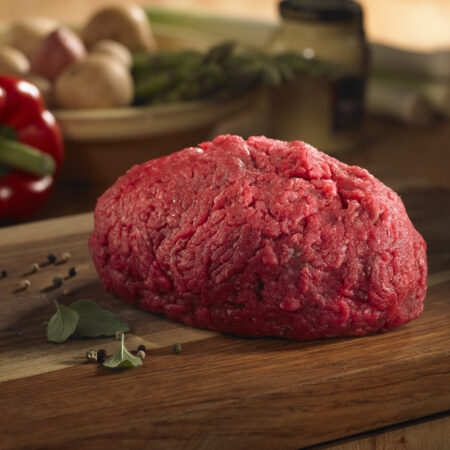
Northfork Bison processes some 3,000 bison from more than a dozen producers in Western Canada each year, producing mostly bison steaks and burgers for restaurants, supermarkets, and foodservice distributors across North America.
First sighting
Virelli, 60, is passionate about animals, especially bison. He feels “they are one of the most fascinating animals in North America.”
The son of Italian immigrants who grew up in Montreal’s West Island wanting to be a vet or a farmer, Verelli saw his first bison on a grade-school outing to Parc Safari, a zoo and amusement park in Hemmingford, an hour’s drive southeast of Montreal. “I remember being amazed at how strong and noble they looked, with their big beards and massive front-heavy frames,” he said.
After studying agricultural economics and commerce at Montreal’s McGill University, Verelli bought the first of the two family restaurants that he owned and operated for nearly 20 years.
“I was already working in the business as a waiter and I really liked it,” he said. “You really learn what customers want and what they expect. That knowledge has really helped me in business.”
Verelli started raising bison as a hobby on his dad’s small farm in the town of Saint-Rémi, a half-hour drive south of the city. “I bought three bison—two females and a male,” he said. “My dad and I took care of them, though it was really my dad who did most of the work.”
His father, now 90 and a welder by trade, built all the steel box stalls, gates and other barriers needed to care and provide for the animals.
By the mid 1990s, Verelli’s herd had grown to 20 animals, including several bulls that he tried unsuccessfully to sell. “No one was buying bison in Quebec back then,” he said. “But I knew there would be people interested in the cuts, which are the same as beef, except that bison have an extra rib.”
He took the animals to a slaughterhouse and began selling bison meat—mostly steaks and burgers—to whoever was interested. “I sold a little bit here, a little bit there,” said Verelli.
Though he managed to sell some steaks to a Quebec distributer, Verelli found a big outlet for burgers when a friend in the U.S. who made menus and paper products for diners invited him to come along and meet his clients.
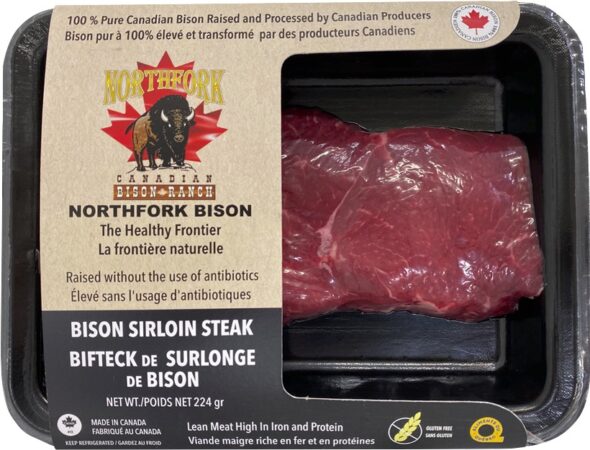
Northfork Bison’s products are sold in supermarkets like IGA and Loblaws as well as online and through Costco.
Breakthrough
Verelli said bison was absent from every menu, and he had a tough time convincing restaurant owners and distributors that buffalo, as bison are more commonly known in the U.S., were plentiful enough to provide meat to the market.
“Most people thought they were extinct,” said Verelli, who has explained countless times that the North American bison has come back from near extinction due to over-hunting. Commercial herds now number nearly a half-million animals.
He finally offered a Greek restaurant owner a case of bison burgers and told him that he would only have to pay if he sold them. “He called me the next day and said, ‘You better bring me more, I’m sold out,’” recalled Verelli, laughing at the memory. “I did, and I never stopped.”
Thanks to word of mouth and his dedication to supplying his customers, including making weekly runs to the Big Apple and sleeping in his delivery truck when there, Virelli was soon supplying dozens of restaurants and distributors with bison meat, which began to appear on menus and enjoy modest, but growing, sales.
“We ended up dominating the New York City market,” said Virelli. “Sure, there was competition. But there always is and that’s good because it pushes you to do better.”
As business increased, Verelli sold his restaurants and rented a space in a federally approved processing centre in the Montreal neighbourhood of Rivière des Prairies where he cut and packaged bison products for several years.
He also named his fledging business Northfork in honour of Southfork, the fictive Texas ranch that was home to the Ewing family in the hit TV series Dallas, Verelli’s all-time favourite.
In 2002, Verelli moved the business into an existing processing facility that he bought in nearby Saint Léonard. The 5,000-sf plant was processing mostly pork for local clients and little equipment other than a skinner.
“We expanded the building and put in a blast freezer and grinders and skin pack machines for retail packaging,” said Verelli. He later added a building across the street to house the company’s offices and dry storage.
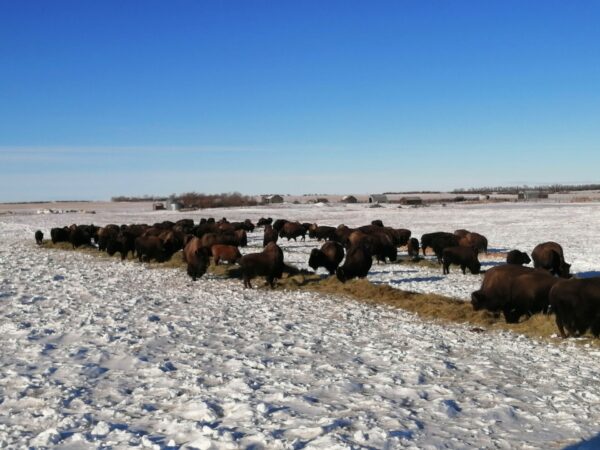
Love at first sight: Verelli was struck by the majestic presence of the ox-like bison, which are native to North America.
Mad cow disease
In May 2003, the confirmation of the first case of mad cow disease in Canada, and the immediate ban of all Canadian beef and bison products into the U.S., threatened Northfork’s existence.
“I’d just bought the plant and all the equipment and—boom!—mad cow closed the border and cut me off from my biggest market,” said Verelli. “I had to turn on a dime to save the company.”
Buoyed by the revenues from pork processing for Viau, a sideline the company continues to this day, Verelli began buying bison from his American competitors and shipping it to a U.S. processor he was already buying trimmings from.
“We were able to keep and supply our customers,” he said. “But the quality of the processing and the meat just wasn’t the same. In this business you really must know what you’re doing.”
When the crisis ended nearly two years later, Northfork was the first Canadian company to ship meat of either beef or bison to the U.S.
“I’m very proud of that fact,” said Verelli. “It showed how well organized we were and how respected we were in the industry.”
Since then, Verelli has continued to build and expand his network of bison producers. He also became a familiar face and regular speaker and participant at meetings of North American beef and bison ranchers, processors and other meat industry stakeholders and advocates.
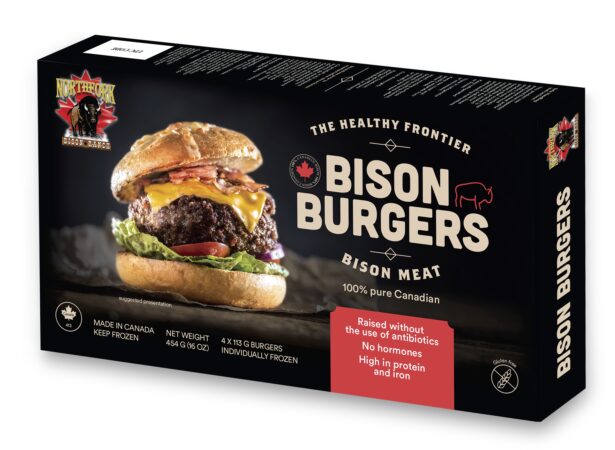
Besides bison steaks and burgers, Northfork Bison offers premium cuts like boneless eight-ounce, rib eye, striploin, and tenderloin steaks.
He also added other wild game products like elk, venison, ostrich, and boar, that now account for roughly one-third of company sales.
Despite the inherent costs of production that will always make bison meat far more expensive than beef, Verelli believes both his company and the industry will continue to grow.
“The No. 1 challenge is cost,” he said. “Bison are not given hormones and steroids, so it takes longer for them to grow to market size. Bison will never be the same cost as beef. Being a family man who knows consumers, I know that’s a problem when people see beef burgers for two or three times less money next to a bison burger.”
Still, Verelli feels lovers of red meat in general, and health-conscious shoppers with the means and desire to buy and consume top-quality products, are driving the market upward.
“We got hit hard by the pandemic because of all the restaurant closures in our markets,” he said. “But our sales are up over 20 per cent this year and demand is not slowing down.”
Virelli said a just-completed overhaul of his processing plant will help to sustain future growth.
“All the old machines are gone,” he said. “We’ve added a half-dozen, state-of-the-art multi-vac machines and grinders. That will help us to continue providing what I believe are the best bison products on the market.”
This article was originally published in the October 2022 issue of Food in Canada.
Print this page